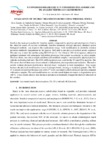Por favor, use este identificador para citar o enlazar este ítem:
http://www.alice.cnptia.embrapa.br/alice/handle/doc/1055830Registro completo de metadatos
| Campo DC | Valor | Lengua/Idioma |
|---|---|---|
| dc.contributor.author | SIQUEIRA, G. L. de A. de | pt_BR |
| dc.contributor.author | LAZZAROTTU, S. R. da S. | pt_BR |
| dc.contributor.author | HORNUNG, P. S. | pt_BR |
| dc.contributor.author | SILVEIRA, A. C. da | pt_BR |
| dc.contributor.author | BANNACH, G. | pt_BR |
| dc.contributor.author | SCHNITZLER, E. | pt_BR |
| dc.contributor.author | LAZZAROTTO, M. | pt_BR |
| dc.date.accessioned | 2016-11-03T11:11:11Z | pt_BR |
| dc.date.available | 2016-11-03T11:11:11Z | pt_BR |
| dc.date.created | 2016-11-03 | pt_BR |
| dc.date.issued | 2016 | pt_BR |
| dc.identifier.citation | In: CONGRESSO BRASILEIRO DE ANÁLISE TÉRMICA E CALORIMETRIA, 10.; CONGRESSO PAN AMERICANO DE ANÁLISE TÉRMICA E CALORIMETRIA, 4., 2016, São Paulo. Trabalhos. [S.l.]: ABRATEC, 2016. | pt_BR |
| dc.identifier.uri | http://www.alice.cnptia.embrapa.br/alice/handle/doc/1055830 | pt_BR |
| dc.description | Starch is the main polysaccharide found in cereals, composed by amylose and amylopectin. Corn is the principal source of starches worldwide. Starches treatment, through physical, chemical and/or biological methods, can improve the applications range. Acid modification in alcoholic solution promotes minimally degradation in the granule. Ball mill is one physical method poorly explored. The aim was to treat the starches using HCl 0.5 mol L-1 for 1 hour in 100 ml of aqueous, ethanol or methanol solutions with subsequent ball milling processes. One sample was selected as native sample. The four others, one native sample and three acid modified samples, were treated by physical process with the oscillating ball mill. The DTG-60H equipment was used for the TG and DTA analysis. The TG curves showed three mass losses related to dehydration, decomposition and oxidation. The native sample without physical modification showed major resistance to total degradation. This occurs because the physical modification cleaves hydrogen bonds, leaving a weakened granule. The TGDTA results showed that the mass loss in the 2nd event was minor in the hydrolyzed samples compared with native samples. The acid modification can provide starch higher resistance to degradation up to 340 °C. These results showed that chemical and physical treatment changed the thermal behaviors of the starches. | pt_BR |
| dc.format | Disponível online. | pt_BR |
| dc.language.iso | eng | eng |
| dc.rights | openAccess | eng |
| dc.subject | Análise térmica | pt_BR |
| dc.subject | Moinho de bolas | pt_BR |
| dc.subject | Ball mill | pt_BR |
| dc.title | Evaluation of double treated starches using thermal tools. | pt_BR |
| dc.type | Artigo em anais e proceedings | pt_BR |
| dc.date.updated | 2017-07-11T11:11:11Z | pt_BR |
| dc.subject.thesagro | Amido | pt_BR |
| dc.subject.nalthesaurus | Thermal analysis | pt_BR |
| dc.subject.nalthesaurus | Starch | pt_BR |
| dc.format.extent2 | 4 p. | pt_BR |
| riaa.ainfo.id | 1055830 | pt_BR |
| riaa.ainfo.lastupdate | 2017-07-11 | pt_BR |
| dc.contributor.institution | Geisa Liandra de Andrade de Siqueira, Doutoranda da UEPG; Simone Rosa da Silveira Lazzarotto, Doutoranda da UEPG; Polyanna Silveira Hornung, UFPR; Ana Claudia da Silveira, UFPR; Gilbert Bannach, UNESP; Egon Schnitzler, UEPG; MARCELO LAZZAROTTO, CNPF. | pt_BR |
| Aparece en las colecciones: | Artigo em anais de congresso (CNPF)  | |
Ficheros en este ítem:
| Fichero | Descripción | Tamaño | Formato | |
|---|---|---|---|---|
| 2016MarceloLCBATCEvaluation.pdf | 242,17 kB | Adobe PDF |  Visualizar/Abrir |









